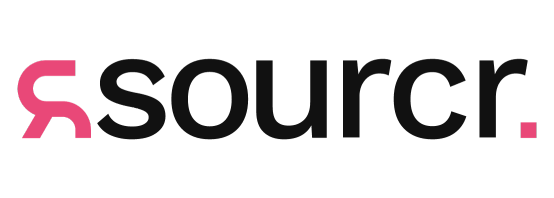Let's talk 02 8320 0683
8 Strategies for Retaining Your Best Talent
Working in recruitment, one thing’s currently pretty clear to us – top employees have no qualms about moving to another organisation if a better opportunity comes calling. And losing a staff member really hurts, not just in dollar figures but in taking those years of company knowledge with them.
If you want to avoid the pain of productivity, performance and culture losses and hold onto your best talent, here are eight suggestions on how to improve employee retention.
1. Review Your Salary and Benefit Offerings
It doesn’t matter what industry you’re in right now, competition for great talent has hit a fever pitch. In such an environment, it’s difficult to remain ahead of the curve in relation to salary going rates (hot tip: ask us!). But it’s oh-so-important you do for two reasons:
- Your valued staff don’t have to feel the pressure to ask for a pay packet boost (or worse yet, go looking elsewhere to find it)
- It clearly shows them how much you value their contribution (an essential for employee engagement and retention)
However, keep in mind that money isn’t the be-all and end-all of retention. It also pays, literally, to try to go beyond the pay packet. What can you offer by way of benefits? Better yet, find out what your staff really want. Many will happily forgo the office ping pong table for greater work flexibility, whether it’s start and finish times that make it easy to attend to a family emergency or school function, or a work from home option. With more employees now enjoying working from home (having got an enforced taste thanks to the COVID-19), offering this is an impactful employee retention strategy.
The ability to personalise benefits is also attractive. If it’s realistic for your organisation to do so, you could consider allowing employees to swap out benefits as their circumstances change. A staff member who has recently become a new parent, for example, might appreciate a bit of extra parental leave over a company-sponsored gym membership.
2. Realise Recognition Reigns Supreme
Rewards needn’t be financial to be effective as an employee retention strategy. Recognition for work well done is just as important as the dollars and cents that make up an employee’s pay packet, as it boosts their motivation and loyalty stores (and those are some great retention boxes to tick!).
Take a few moments to think about what you do on a daily or weekly basis to show your employees how much you and the business at large value their efforts. If you need a bit of inspiration, a simple “thank you”, acknowledging their efforts one-on-one, or giving public recognition in team meetings or across digital communications can make a big difference. Awards are always appreciated too.
Some examples are:
- Team member of the month
- Gift cards
- Social activities (pizza nights, tenpin bowling etc.)
- In-office treats (lunch delivery, lunchtime games/trivia etc.)
3. Ensure Employees Have a Clear Career Progression Pathway
Another vital component of learning how to retain top talent is to ensure they’re confident they have a bright and engaging future at your company. Invest in the time to uncover your employees’ professional goals and try to understand what excites them. Your sales star might want to eventually lead their own team, or your tech support guru might have a hankering to get into development in the future.
Once you’re clear on where they want to go, set up an appropriate development pathway encompassing short and long-term milestones. And don’t forget to check in regularly to ensure their role still aligns with their long-term goals.
4. Provide Regular Opportunities to Upskill
For many employees, stagnation puts them firmly on the fast track to looking for greener employment pastures. Upskilling and further training is one way to avoid this and keep those engagement levels high.
Give your staff plenty of opportunities to update and expand their skillsets, from internal and external training to mentorship and job shadowing, to a commitment to promote from within (both laterally and up the ladder). Aim to connect this to each employee’s personalised career progression pathway so it’s relevant and valuable to them.
5. Foster an Open Communication Culture
Another essential to improve employee engagement and retention is nurturing an ‘open door’ culture – one where employees know their opinions are welcomed and their feedback is actioned. This way, you can quickly address any frustrations or worries with salaries, tasks, deadlines or management before they come so deep-seated the staff member entertains the idea of other job options.
Soliciting feedback is one part of developing a truly open culture. You can consider a mix of anonymous (online) and direct (face-to-face in meetings) at regular intervals. A simple form might be a short survey that asks “Can you identify any bottlenecks in your daily workflow? What suggestions do you have for improvement?”.
Whatever form/s suit your company, follow-up is vital. Act on the suggestions, or provide an explanation if you can’t.
6. Reflect on Your Leadership Style
it’s widely acknowledged that a bad boss is one of the main reasons people decide to move jobs. While it could be a tad uncomfortable, consider critically reviewing your leadership style. Are you a ‘hoverer’, always asking for updates or requiring approvals before your staff can take action?
If you’ve successfully fostered an open culture, you could also directly ask your employees for honest feedback about what is and isn’t working in the way you manage and lead. And again, follow through by taking steps, no matter how big or small, to action it.
7. Learn From Your Exit Interviews
Ok, so you lost an employee. While it’s frustrating, you can still salvage something valuable from it, and you will find it in your employee’s exit interview.
An exiting team member holds crucial intel about the health of your company. If done properly, the exit interview can allow you to extract great feedback to assist in improving your culture, minimise further turnover and, even improve your brand. Aim to do it during your employee’s final week with someone who’s not their direct manager, as a neutral party increases the chances of them opening up and speaking freely.
8. Recruit Smart
While the above seven employee retention strategies are focused on what you can do with your current employees, this one sits in the ‘prevention is better than cure’ vein.
Carefully reviewing your recruitment processes helps you achieve an optimum alignment between what you want and what the employee wants from the get-go, resulting in a better match and longer-term retention.
This involves:
- Understanding the job and the skills, abilities and qualities needed in a potential employee
- Asking the right interview questions
- Setting and managing employee expectations during the recruitment process
- Maintaining communication momentum so you don’t lose a great potential hire to another company.
Sounds like a lot of work, right? As Sales, Marketing, Business Services and Technology recruitment specialists, this work is something we love doing! We’ll happily take the stress out of the recruitment process for you, along with providing an ideal candidate experience throughout every touchpoint of the journey. Feel free to get in touch or give us a buzz on 02 8320 0683 to find out how we can help.
















